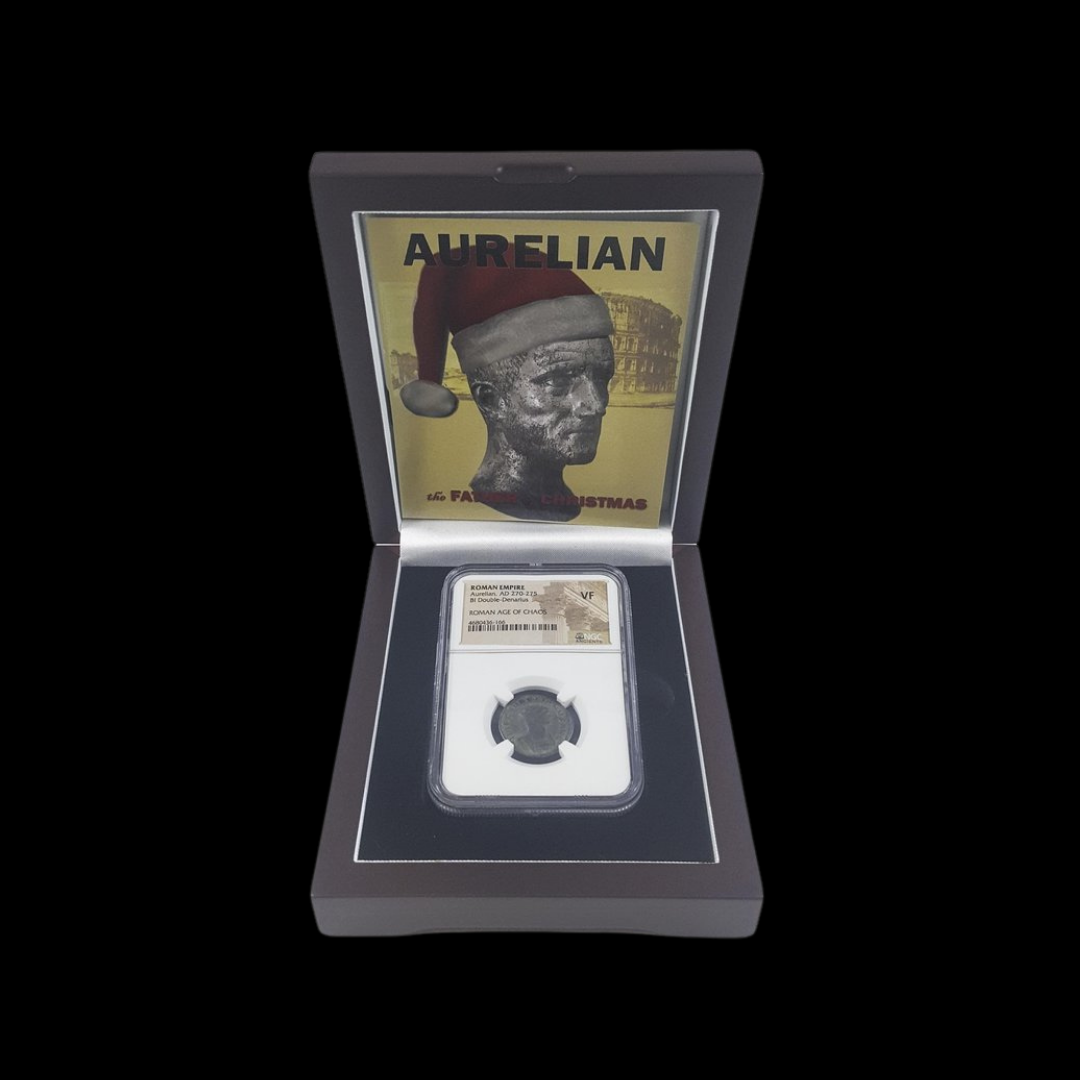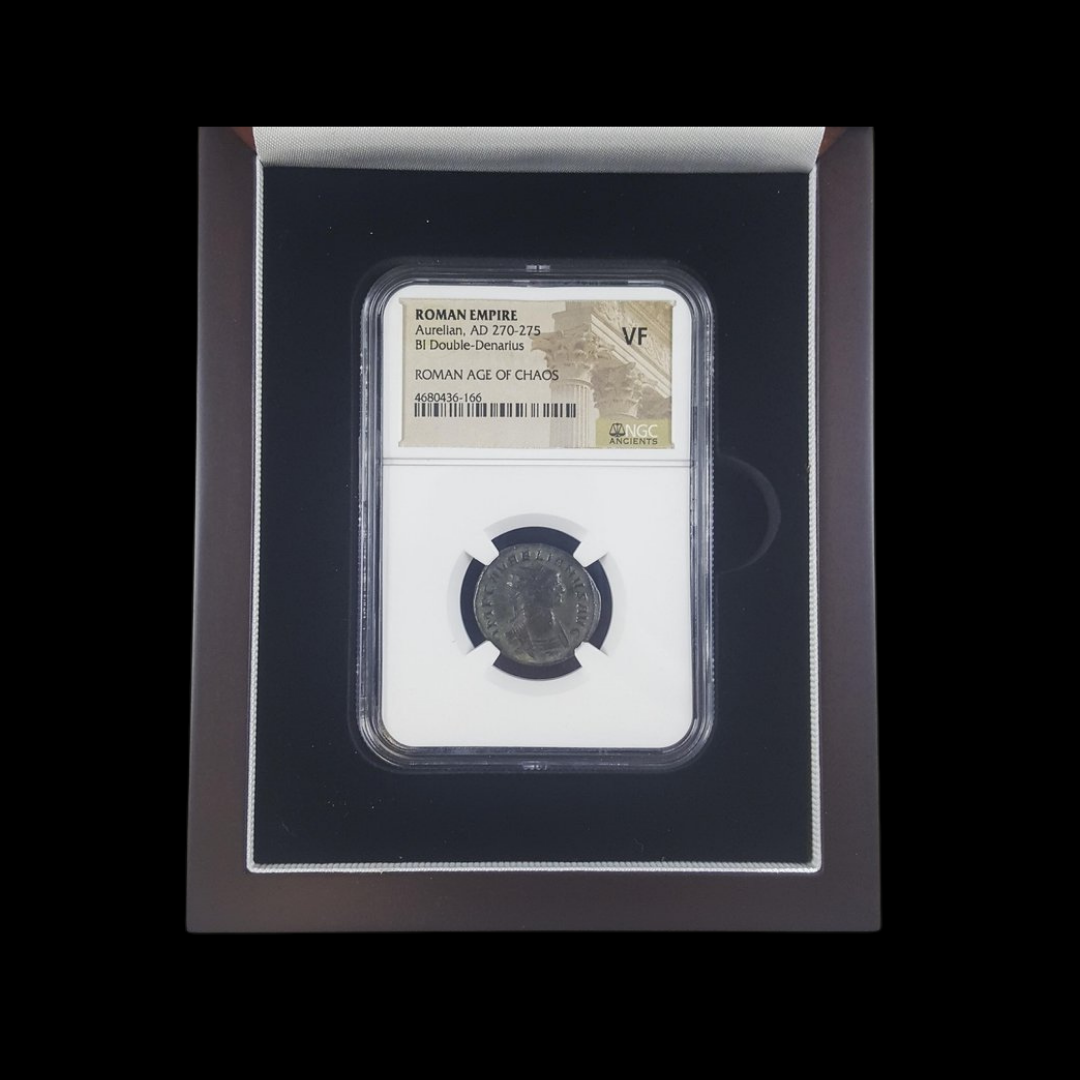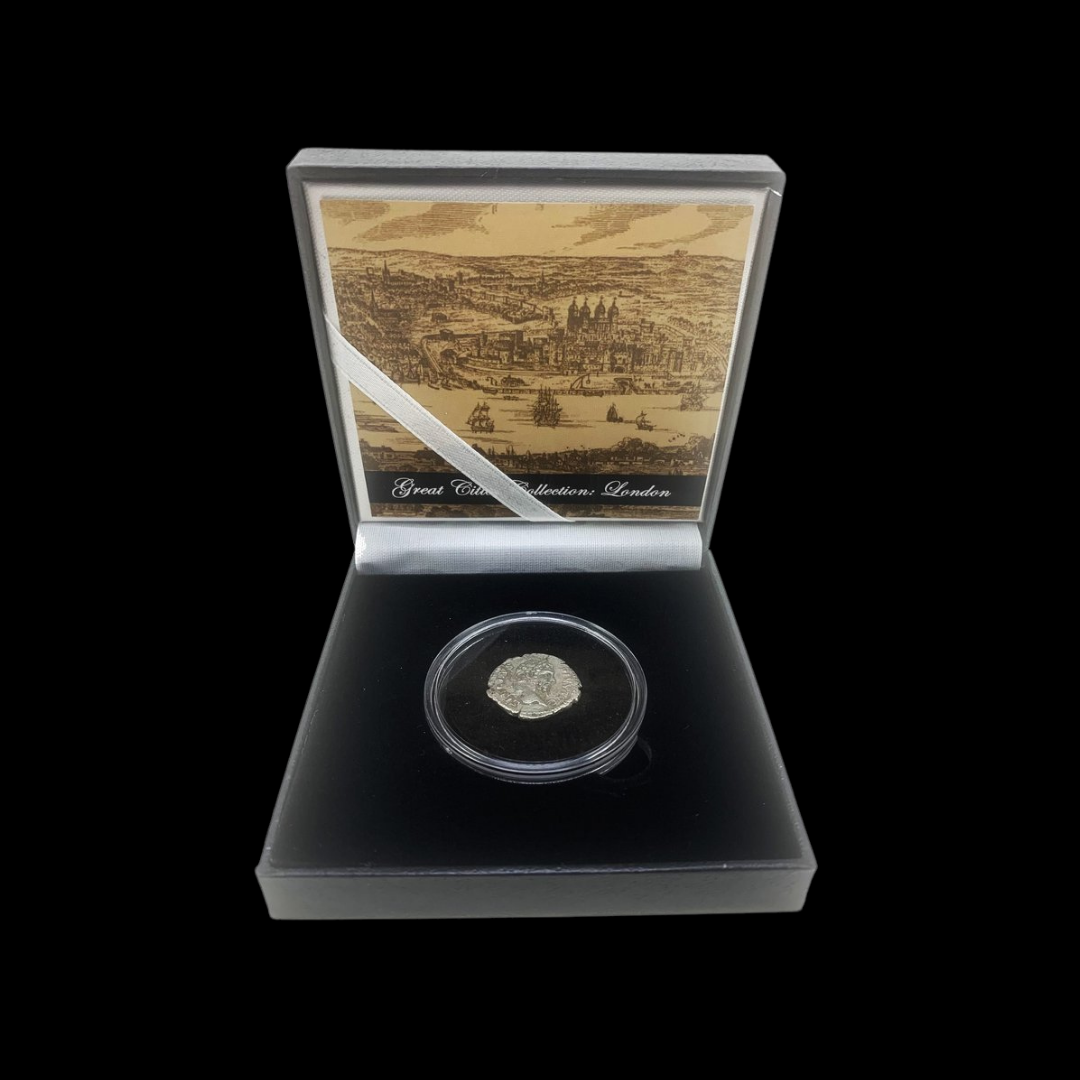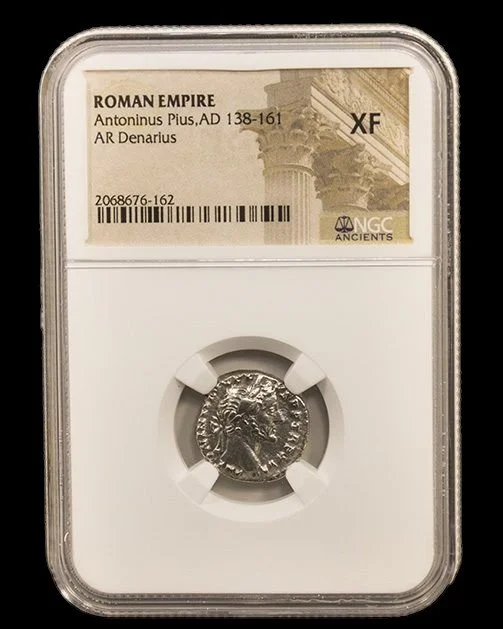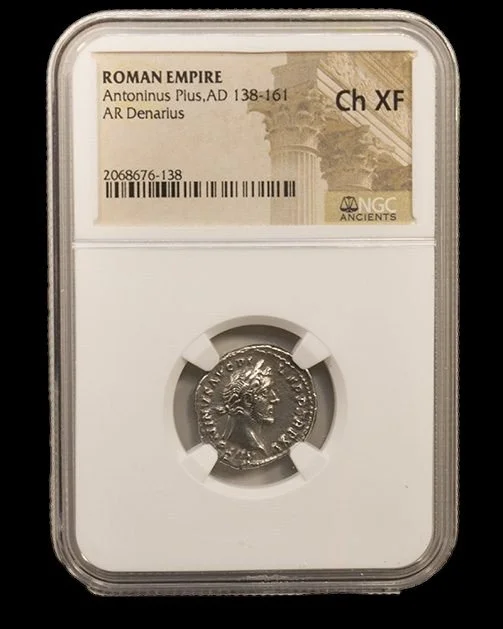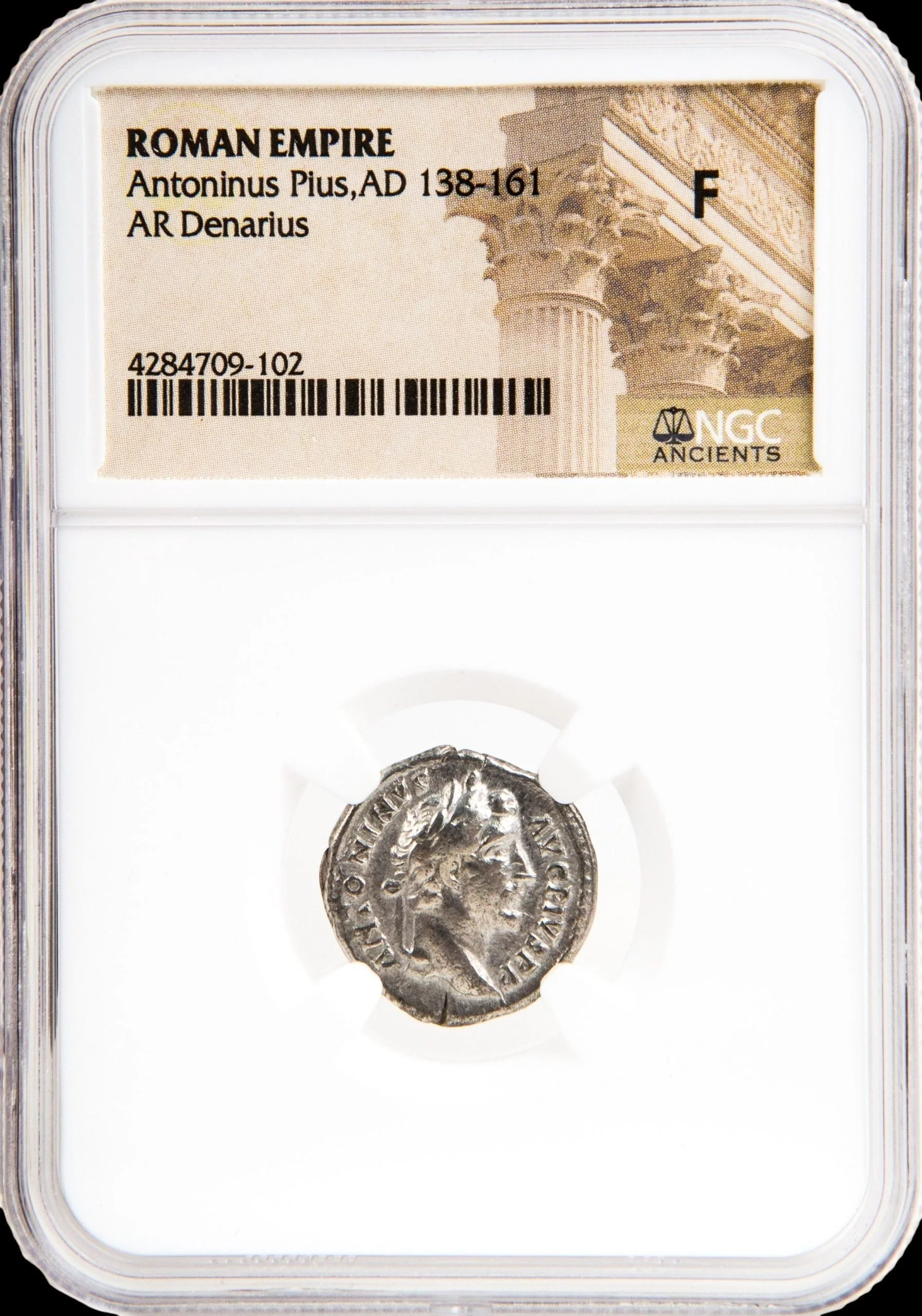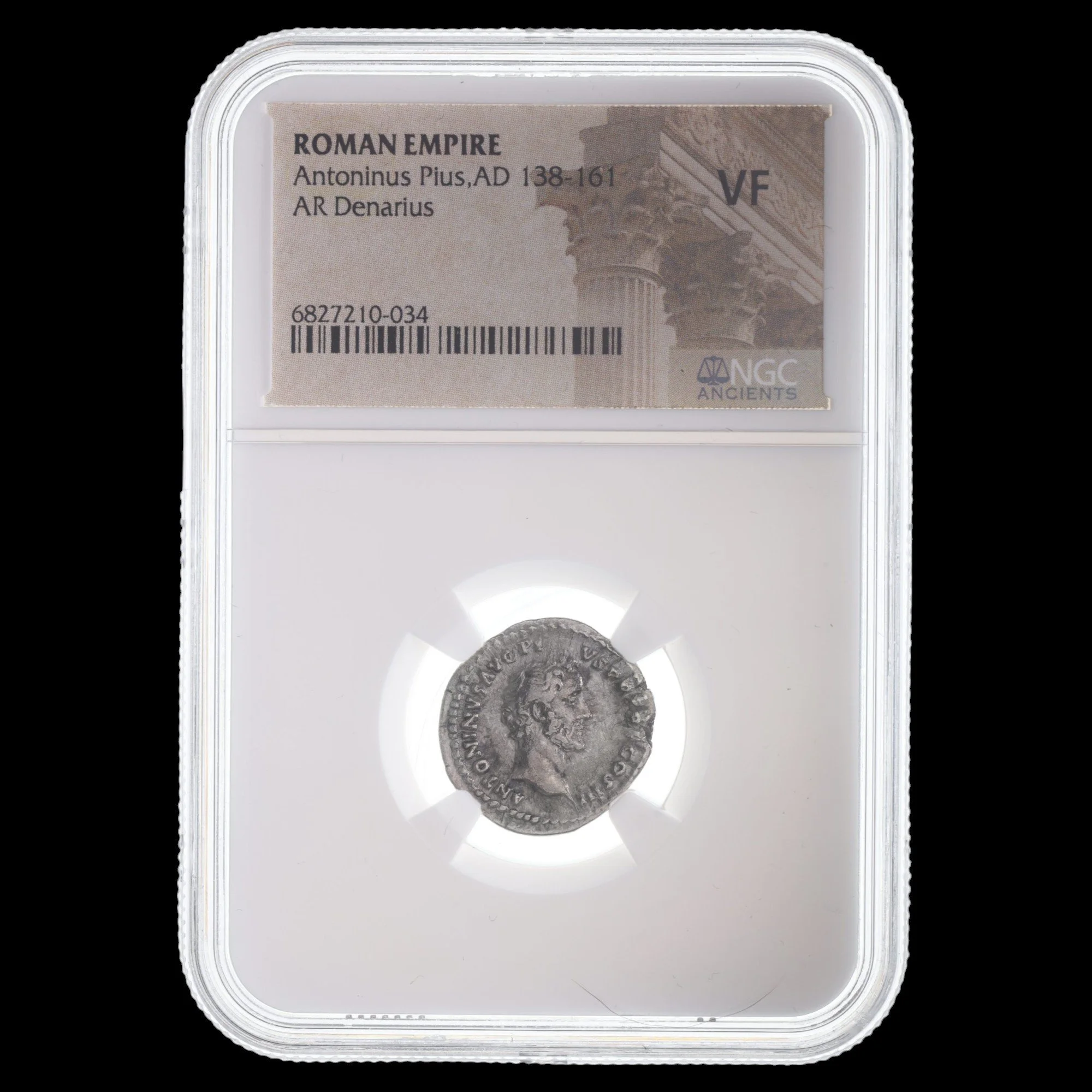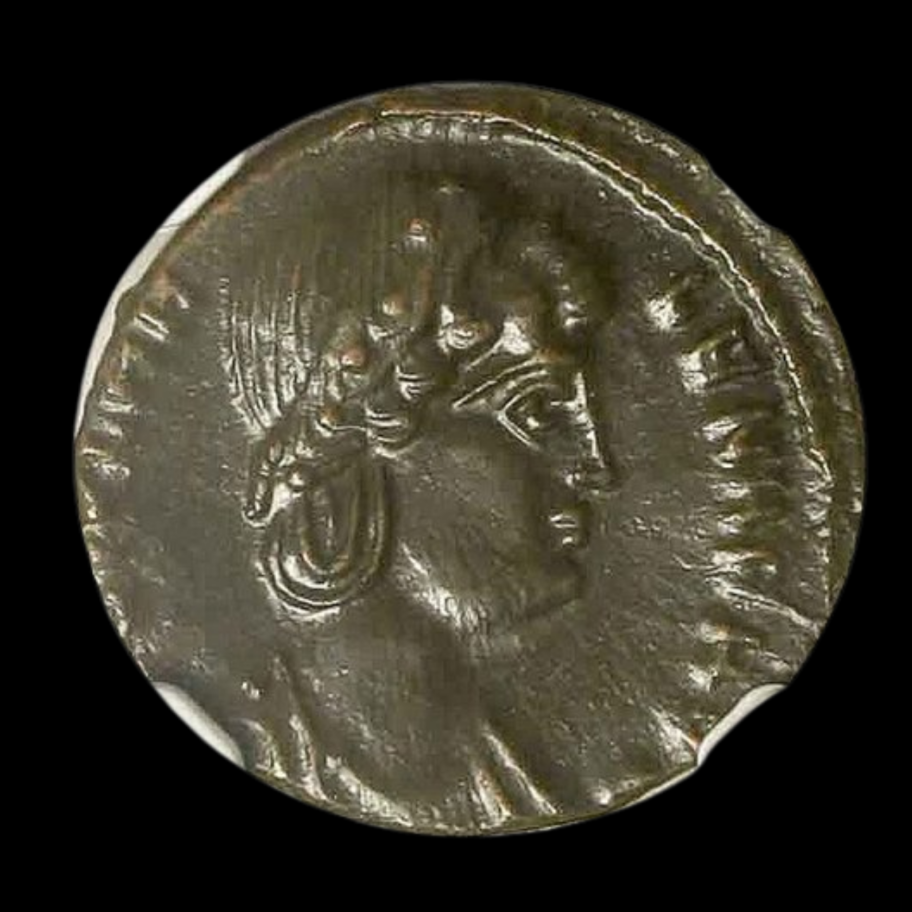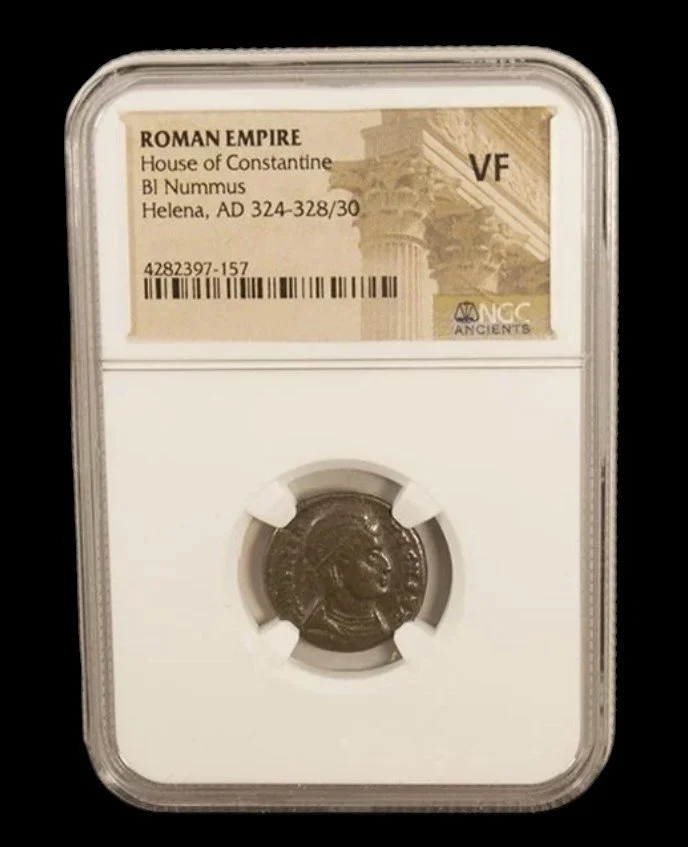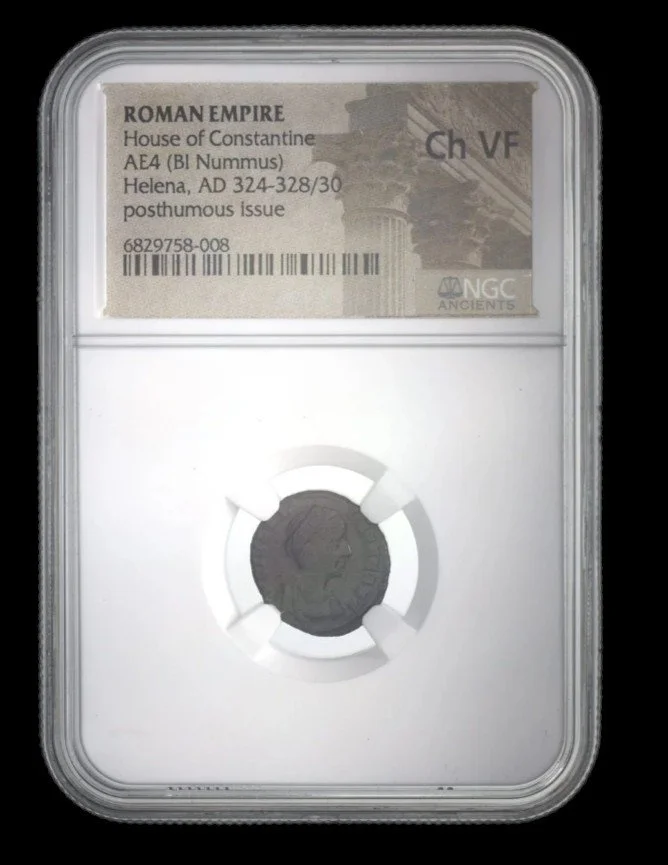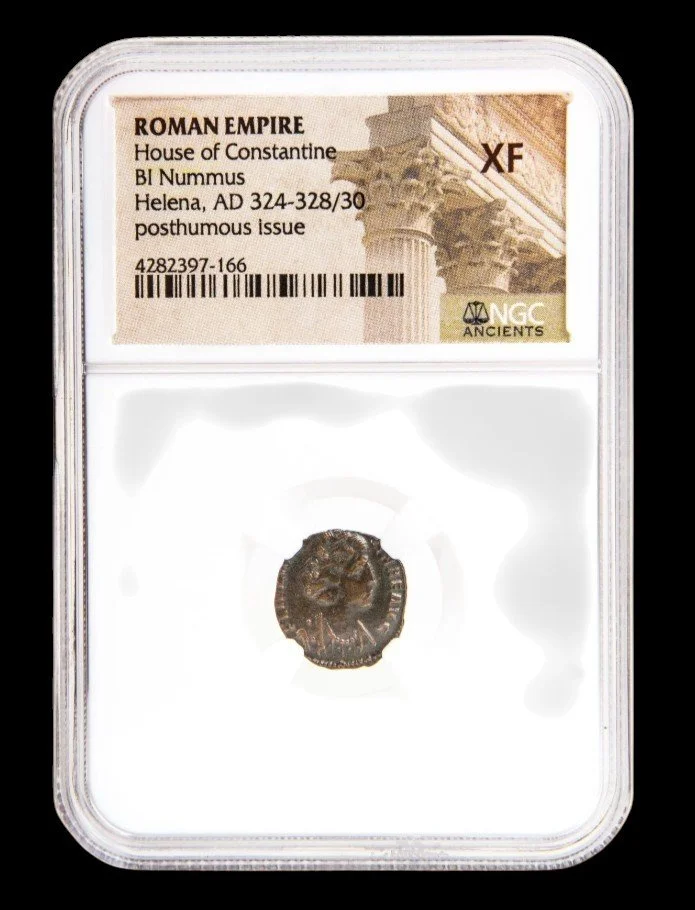 Image 1 of 10
Image 1 of 10

 Image 2 of 10
Image 2 of 10

 Image 3 of 10
Image 3 of 10

 Image 4 of 10
Image 4 of 10

 Image 5 of 10
Image 5 of 10

 Image 6 of 10
Image 6 of 10

 Image 7 of 10
Image 7 of 10

 Image 8 of 10
Image 8 of 10

 Image 9 of 10
Image 9 of 10

 Image 10 of 10
Image 10 of 10











Roman Bronze Coin of Emperor Licinius I (about 1,700-1,720 years ago)
The coins shown are representative examples of the grade and type, but not the actual specimens for sale. For details on NGC’s grading standards and definitions, please refer to our NGC Grading page.
This bronze coin was minted during the reign of Licinius I, who ruled as co-emperor during the late Roman period alongside Constantine the Great. As an emperor of the eastern provinces, Licinius played a crucial role in the political and religious transformations that occurred during this pivotal era when the Roman Empire was transitioning toward Christianity while still maintaining many traditional Roman practices.
Coin Description:
Front side: Portrait of Emperor Licinius I facing right, typically wearing either a laurel wreath or radiate crown, with Latin inscription giving his name and imperial titles
Back side: Common motifs include Roman deities, military symbols, or personifications of virtues like Victory or Providence, accompanied by Latin legends
Technical Details:
Bronze composition (AE = aes, bronze in numismatic terminology)
Denomination: Likely a follis or reduced follis (standard bronze denomination of this period)
NGC certified (Numismatic Guaranty Corporation)
Minted between 308-324 AD
Condition as certified by NGC
Historical Significance: Licinius emerged as a major political figure during the complex power struggles following the collapse of the Tetrarchy system. As Constantine's ally and brother-in-law through his marriage to Constantia, Licinius co-authorized the famous Edict of Milan in 313 AD, which granted religious tolerance to Christians throughout the empire. Despite this momentous collaboration, the relationship between the two emperors deteriorated into open hostility. After years of uneasy co-rule and several military conflicts, Constantine finally defeated Licinius at the Battle of Chrysopolis (near modern Istanbul, Turkey) in 324 AD. Though initially spared and exiled, Licinius was ultimately executed on Constantine's orders, consolidating all imperial power under Constantine alone.
The coins shown are representative examples of the grade and type, but not the actual specimens for sale. For details on NGC’s grading standards and definitions, please refer to our NGC Grading page.
This bronze coin was minted during the reign of Licinius I, who ruled as co-emperor during the late Roman period alongside Constantine the Great. As an emperor of the eastern provinces, Licinius played a crucial role in the political and religious transformations that occurred during this pivotal era when the Roman Empire was transitioning toward Christianity while still maintaining many traditional Roman practices.
Coin Description:
Front side: Portrait of Emperor Licinius I facing right, typically wearing either a laurel wreath or radiate crown, with Latin inscription giving his name and imperial titles
Back side: Common motifs include Roman deities, military symbols, or personifications of virtues like Victory or Providence, accompanied by Latin legends
Technical Details:
Bronze composition (AE = aes, bronze in numismatic terminology)
Denomination: Likely a follis or reduced follis (standard bronze denomination of this period)
NGC certified (Numismatic Guaranty Corporation)
Minted between 308-324 AD
Condition as certified by NGC
Historical Significance: Licinius emerged as a major political figure during the complex power struggles following the collapse of the Tetrarchy system. As Constantine's ally and brother-in-law through his marriage to Constantia, Licinius co-authorized the famous Edict of Milan in 313 AD, which granted religious tolerance to Christians throughout the empire. Despite this momentous collaboration, the relationship between the two emperors deteriorated into open hostility. After years of uneasy co-rule and several military conflicts, Constantine finally defeated Licinius at the Battle of Chrysopolis (near modern Istanbul, Turkey) in 324 AD. Though initially spared and exiled, Licinius was ultimately executed on Constantine's orders, consolidating all imperial power under Constantine alone.


